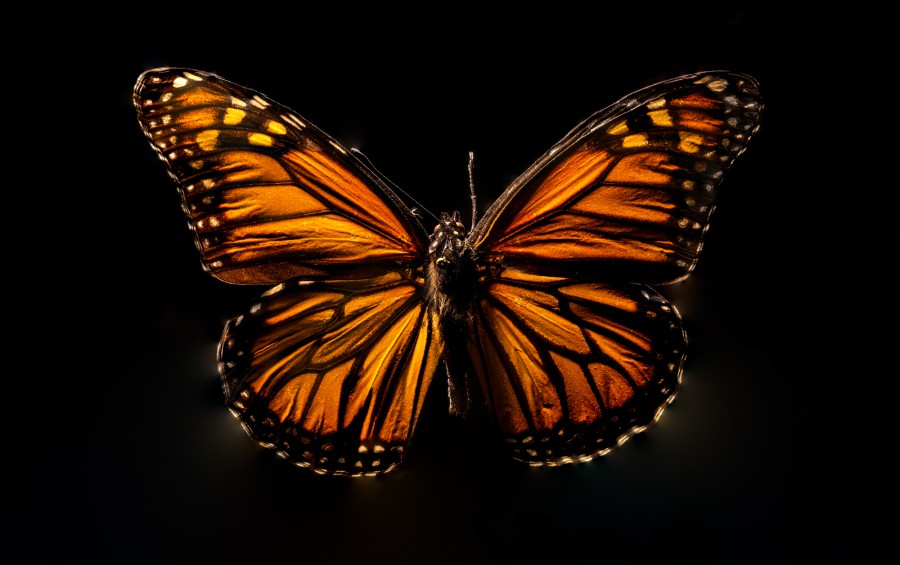Monarch Butterfly
- Date:
- collected in 1918
- Record:
- ENT993-000387
- Scientific Name:
- Danaus plexippus
This handsome butterfly is most famous for its long-distance migration. Monarchs have been recorded all across southern British Columbia at low elevations, although they are seldom seen outside the dry southern Interior valleys. It is a blue-listed species in BC, meaning it is of special concern because of characteristics that make them particularly sensitive to human activities or natural events.
Most BC populations of this butterfly overwinter communally in California, while populations east of the Rockies head even further south to the mountains of Mexico. These aggregations are at risk because of deforestation, which reduces the habitat available to them. Temperature ranges for breeding monarchs make climate change a real issue as well – if it is too dry or too cool, this species cannot successfully reproduce.
The food-plant of the larva in the province is the Showy Milkweed (Asclepias speciosa), which contains heart poisons called cardiac glycosides. The larvae and adults hold these chemicals in their bodies, making them toxic to predators. Both larvae and adults are boldly coloured to warn potential predators to stay away. Milkweed is being eliminated in agricultural areas through the use of herbicides on genetically-modified crops.
